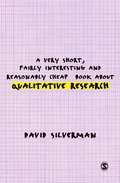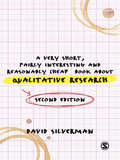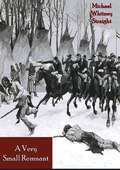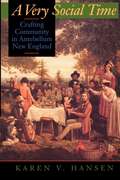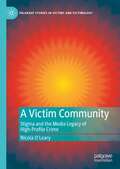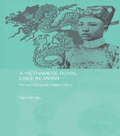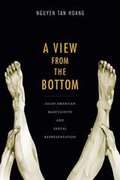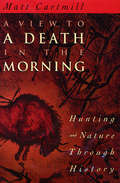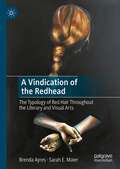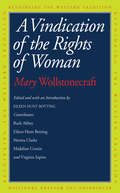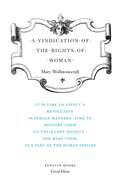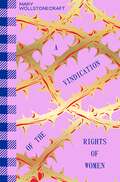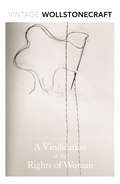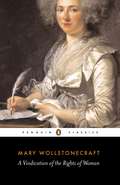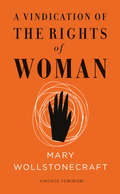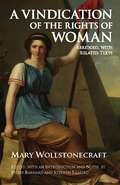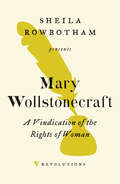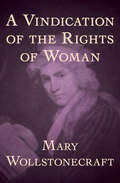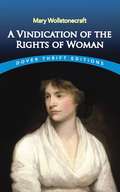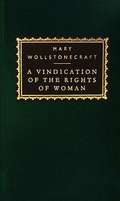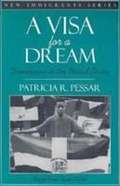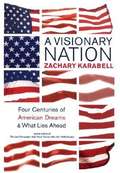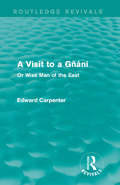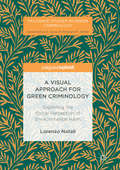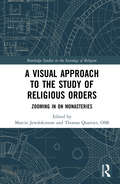- Table View
- List View
A Very Short, Fairly Interesting and Reasonably Cheap Book about Qualitative Research
by David Silverman`Clear and incisive, this valuable text needs to be on every qualitative researcher’s bookshelf. What could be handier? I recommend it to anyone in the trade for its seasoned good sense and advice' - Jay Gubrium, University of Missouri `David Silverman has drawn on his enormous experience in writing, teaching and using qualitative research methods to produce a book that lays bare key dilemmas and confronts questions that qualitative researchers often avoid' - Jonathan Potter, Loughborough University `David Silverman has drawn on his enormous experience in writing, teaching and using qualitative research methods to produce a book that lays bare key dilemmas and confronts questions that qualitative researchers often avoid' - This is the book which everybody doing a research project has been waiting for. Writing in an informal and accessible style, David Silverman offers the reader an entry into the broader issues of qualitative research that many textbooks gloss over - the underlying arguments of qualitative research and the key debates about its future direction. Silverman shows how good research can be methodologically inventive, empirically rigorous, theoretically-alive and practically relevant. Using fascinating materials, ranging from photographs to novels and newspaper stories, this book demonstrates that getting to grips with these issues means asking ourselves fundamental questions about how we are influenced by contemporary culture. David Silverman provides an antidote to the boring textbook, which is relevant to any degree course on research methods. Brilliantly written and always challenging and entertaining, this book will challenge your perceptions and help you think `out of the box' about the nature and process of doing qualitative research.
A Very Short, Fairly Interesting and Reasonably Cheap Book about Qualitative Research (Very Short, Fairly Interesting & Cheap Books)
by David SilvermanDavid Silverman's second edition provides a refreshing introduction to doing and debating qualitative research. An antidote to the standard textbook, this new edition shows how research can be methodologically inventive, empirically rigorous, theoretically-alive and practically relevant. Using materials ranging from photographs to novels and newspaper stories, the book demonstrates that getting to grips with qualitative methods means asking ourselves fundamental questions about how we are influenced by contemporary culture. By drawing on examples from websites and social media in the new edition, Silverman's text acknowledges how our social worlds are changing and explores new arenas for data collection. A new Glossary of Received Ideas aims to challenge conventional understandings of terms central to qualitative research and will inform, amuse and stimulate readers. This book is perfect pre-course reading for those new to research as well as seasoned researchers who want to reflect on their practice.
A Very Small Remnant
by Michael Whitney StraightA novel of honor, based on the events leading to the infamous Sand Creek Massacre of the Cheyenne Indians near Fort Lyon in 1864.A Very Small Remnant by Michael Whitney Straight is a poignant and thought-provoking novel that delves into the complexities of identity, heritage, and the pursuit of belonging in a world marked by division and change. Through richly drawn characters and an evocative narrative, Straight weaves a tale that is both deeply personal and universally resonant.The story centers on a man who grapples with the weight of his ancestry and the burden of expectations as he navigates a society shaped by historical injustices and evolving cultural landscapes. As he uncovers long-buried truths about his family’s past, he is forced to confront questions of loyalty, love, and the sacrifices necessary to preserve what is most important.Through its lyrical prose and profound themes, the novel invites readers to reflect on the enduring power of memory, the resilience of the human spirit, and the enduring quest for connection in the face of adversity. Straight masterfully blends intimate character studies with broader social commentary, creating a narrative that lingers long after the final page.Perfect for readers who appreciate deeply introspective and emotionally rich stories, A Very Small Remnant is a testament to the enduring complexities of the human condition and the courage it takes to find one’s place in an ever-changing world.
A Very Social Time: Crafting Community in Antebellum New England
by Karen V. HansenKaren Hansen's richly anecdotal narrative explores the textured community lives of New England's working women and men—both white and black—n the half century before the Civil War. Her use of diaries, letters, and autobiographies brings their voices to life, making this study an extraordinary combination of historical research and sociological interpretation.Hansen challenges conventional notions that women were largely relegated to a private realm and men to a public one. A third dimension—the social sphere—also existed and was a critical meeting ground for both genders. In the social worlds of love, livelihood, gossip, friendship, and mutual assistance, working people crossed ideological gender boundaries.The book's rare collection of original writings reinforces Hansen's arguments and also provides an intimate glimpse into antebellum New England life.
A Victim Community: Stigma and the Media Legacy of High-Profile Crime (Palgrave Studies in Victims and Victimology)
by Nicola O’LearyAlthough historically ignored, crime victims are now very firmly on the map. For politicians, newspapers, the media and the public at large, criminal injury and loss are a source of constant concern and anxiety. Criminologists and media analysts have studied much of this concern in recent years but what has not been investigated is how communities experience high profile crimes and the media intrusion that inevitably follows. This book seeks to address this gap by exploring how the communities of Soham and Dunblane, that witnessed high profile crimes, lived with the tragic events at the time and the attention of the world’s media afterwards.Based on a two-year qualitative study of these communities, this book looks beneath the surface of the relationships, dilemmas and unexpected triumphs of communities struggling to come to terms with the most harrowing of events, within the glare of the media spotlight. Combining empirical observations with media analysis and social theory, this book offers something new to the criminological audience: the concept of the victim community.
A Vietnamese Royal Exile in Japan: Prince Cuong De (1882-1951) (Routledge Studies in the Modern History of Asia)
by Tran My-VanPrince Cuong De, viewed by the French as a pretender to the Vietnamese throne, was an important and interesting figure in the history of Vietnam’s struggle for independence. He was highly regarded by many non-communist Vietnamese nationalists, but has been virtually ‘written out’ of Vietnamese history. Based on extensive original research, including interviews and important documents from the French national archives, this book traces the life of Cuong De as a royal exile in Japan, exploring his links to key Japanese leaders and how he campaigned for his cause and was supported in Japan, Vietnam and elsewhere. The author shows how Cuong De had great hopes that imperial Japan would advance the cause of Vietnamese independence from France, especially during the Japanese occupation of Vietnam in 1941-5. But these hopes were disappointed as Japan's Indochina policy gave primacy to Japan's own economic and strategic self-interest. This book provides many fascinating insights into the development of Vietnamese nationalism and the long, harsh struggle for independence, from the perspective of an interesting and undeservedly neglected figure.
A View from the Bottom: Asian American Masculinity and Sexual Representation
by Tan Hoang NguyenA View from the Bottom offers a major critical reassessment of male effeminacy and its racialization in visual culture. Examining portrayals of Asian and Asian American men in Hollywood cinema, European art film, gay pornography, and experimental documentary, Nguyen Tan Hoang explores the cultural meanings that accrue to sexual positions. He shows how cultural fantasies around the position of the sexual "bottom" overdetermine and refract the meanings of race, gender, sexuality, and nationality in American culture in ways that both enable and constrain Asian masculinity. Challenging the association of bottoming with passivity and abjection, Nguyen suggests ways of thinking about the bottom position that afford agency and pleasure. A more capacious conception of bottomhood--as a sexual position, a social alliance, an affective bond, and an aesthetic form--has the potential to destabilize sexual, gender, and racial norms, suggesting an ethical mode of relation organized not around dominance and mastery but around the risk of vulnerability and shame. Thus reconceived, bottomhood as a critical category creates new possibilities for arousal, receptiveness, and recognition, and offers a new framework for analyzing sexual representations in cinema as well as understanding their relation to oppositional political projects.
A View to a Death in the Morning: Hunting and Nature Through History
by Matt CartmillWhat brought the ape out of the trees, and so the man out of the ape, was a taste for blood. This is how the story went, when a few fossils found in Africa in the 1920s seemed to point to hunting as the first human activity among our simian forebears—the force behind our upright posture, skill with tools, domestic arrangements, and warlike ways. Why, on such slim evidence, did the theory take hold? In this engrossing book Matt Cartmill searches out the origins, and the strange allure, of the myth of Man the Hunter. An exhilarating foray into cultural history, A View to a Death in the Morning shows us how hunting has figured in the western imagination from the myth of Artemis to the tale of Bambi—and how its evolving image has reflected our own view of ourselves. A leading biological anthropologist, Cartmill brings remarkable wit and wisdom to his story. Beginning with the killer-ape theory in its post–World War II version, he takes us back through literature and history to other versions of the hunting hypothesis. Earlier accounts of Man the Hunter, drafted in the Renaissance, reveal a growing uneasiness with humanity’s supposed dominion over nature. By delving further into the history of hunting, from its promotion as a maker of men and builder of character to its image as an aristocratic pastime, charged with ritual and eroticism, Cartmill shows us how the hunter has always stood between the human domain and the wild, his status changing with cultural conceptions of that boundary. Cartmill’s inquiry leads us through classical antiquity and Christian tradition, medieval history, Renaissance thought, and the Romantic movement to the most recent controversies over wilderness management and animal rights. Modern ideas about human dominion find their expression in everything from scientific theories and philosophical assertions to Disney movies and sporting magazines. Cartmill’s survey of these sources offers fascinating insight into the significance of hunting as a mythic metaphor in recent times, particularly after the savagery of the world wars reawakened grievous doubts about man’s place in nature. A masterpiece of humanistic science, A View to a Death in the Morning is also a thoughtful meditation on what it means to be human, to stand uncertainly between the wilderness of beast and prey and the peaceable kingdom. This richly illustrated book will captivate readers on every side of the dilemma, from the most avid hunters to their most vehement opponents to those who simply wonder about the import of hunting in human nature.
A Vindication of the Redhead: The Typology of Red Hair Throughout the Literary and Visual Arts
by Brenda Ayres Sarah E. MaierA Vindication of the Redhead investigates red hair in literature, art, television, and film throughout Eastern and Western cultures. This study examines red hair as a signifier, perpetuated through stereotypes, myths, legends, and literary and visual representations. Brenda Ayres and Sarah E. Maier provide a history of attitudes held by hegemonic populations toward red-haired individuals, groups, and genders from antiquity to the present. Ayres and Maier explore such diverse topics as Judeo-Christian narratives of red hair, redheads in Pre-Raphaelite paintings, red hair and gender identity, famous literary redheads such as Anne of Green Gables and Pippi Longstocking, contemporary and Neo-Victorian representations of redheads from the Black Widow to The Girl with the Dragon Tattoo, and more. This book illuminates the symbolic significance and related ideologies of red hair constructed in mythic, religious, literary, and visual cultural discourse.
A Vindication of the Rights of Woman
by Mary Wollstonecraft Eileen Hunt BottingMary Wollstonecraft's visionary treatise, originally published in 1792, was the first book to present women's rights as an issue of universal human rights. Ideal for coursework and classroom study, this comprehensive edition of Wollstonecraft's heartfelt feminist argument includes illuminating essays by leading scholars that highlight the author's significant contributions to modern political philosophy, making a powerful case for her as one of the most substantive political thinkers of the Enlightenment era. No other scholarly work to date has examined as closely both the ideological moorings and the enduring legacy of Wollstonecraft's groundbreaking and courageous discourse.
A Vindication of the Rights of Woman
by Mary WollstonecraftFirst published in 1792, A Vindication of the Rights of Woman was an instant success, turning its thirty-three-year-old author into a minor celebrity. A pioneering work of early feminism that extends to women the Enlightenment principle of "the rights of man," its argument remains as relevant today as it was for Woll-stonecraft's contemporaries. "Mary Wollstonecraft was not the first writer to call for women to receive a real, challenging education," writes Katha Pollitt in the new Introduction. "But she was the first to connect the education of women to the transformation of women's social position, of relations between the sexes, and even of society itself. She was the first to argue that women's intellectual equality would and should have actual consequences. The winds of change sweep through her pages." This classic work of early feminism remains as relevant and passionate today as it was for Wollstonecraft's contemporaries. This edition includes new explanatory notes.From the Trade Paperback edition.
A Vindication of the Rights of Woman (Cambridge Texts In The History Of Political Thought Ser.)
by Mary WollstonecraftA seminal book in a feminist conversation that still continues today.Now regarded as one of the founding feminist philosophers, Mary Wollstonecraft's writings have inspired conversation and action since their first publication. Wollstonecraft produced this declaration of female independence in 1792. Passionate, eloquent and forthright, it launched a scathing attack on the current understanding of women and laid out the tenets for a new vision: equal education, an end to prejudice and a chance for women to become defined by their profession, not their partner. Whereas Mary Wollstonecraft's work was received at the time with a mixture of admiration and outrage, she is now rightly viewed as a powerful matriarch of modern feminism.Part of a boldly designed series of classics, with wider margins for notes, this book is perfect for design-lovers and students alike. With bold, eye-catching graphic covers by Evi O Studio, this collection aims to introduce a selection of the most celebrated works of the last thousand years to a new audience. Featuring tales of adventure, fiction from the 19th and 20th centuries, feminist writings, and reflections on art, politics, philosophy and the origins of man, this is a small, wide-reaching and essential collection.'My own sex, I hope, will excuse me, if I treat them like rational creatures.'
A Vindication of the Rights of Woman (Cambridge Texts In The History Of Political Thought Ser.)
by Mary WollstonecraftA key work of proto-feminism, Mary Wollstonecraft's readable and impassioned argument is as relevant today as it was two hundred years ago. Before the concept of equality between the sexes was even conceived, Wollstonecraft wrote this book, a treatise of proto-feminism that was as powerful and original then as it is now. In it she argues with clarity and originality for the rational education of women and for an increased female contribution to society. It was a cry for justice from a woman with no power other than her pen and it put in motion a drive towards greater equality between men and women, a movement which continues to this day. ‘The first great piece of feminist writing’ Independent
A Vindication of the Rights of Woman (Cambridge Texts In The History Of Political Thought Ser.)
by Mary Wollstonecraft'She is alive and active - we hear her voice and trace her influence even now' Virginia WoolfWriting in an age when the call for the rights of man had brought revolution to America and France, Mary Wollstonecraft produced her own declaration of female independence in 1792. Passionate and forthright, A Vindication of the Rights of Woman attacked the prevailing view of docile, decorative femininity, and instead laid out the principles of emancipation: an equal education for girls and boys, an end to prejudice, and for women to become defined by their profession, not their partner. Mary Wollstonecraft's work was received with a mixture of admiration and outrage - one critic called her 'a hyena in petticoats' - yet it established her as the mother of modern feminism.
A Vindication of the Rights of Woman (Vintage Feminism Short Editions)
by Mary WollstonecraftDiscover Wollstonecraft’s classic feminist text in an abridged, digestible form.WITH AN INTRODUCTION BY ZOE WILLIAMS The term feminism did not yet exist when Mary Wollstonecraft wrote this book, but it was the first great piece of feminist writing. In these pages you will find the essence of her argument – for the education of women and for an increased female contribution to society. Her work made the first ripples of what would later become the tidal wave of the women’s rights movement. Rationalist but revolutionary, Wollstonecraft changed the world for women.Vintage Feminism: classic feminist texts in short form
A Vindication of the Rights of Woman: Abridged, with Related Texts
by Mary Wollstonecraft Stephen Shapiro Philip BarnardThis edition features a shrewd, annotated abridgment of Mary Wollstonecraft's A Vindication of the Rights of Woman (1792) accompanied by an array of texts that help situate the Vindication in its political, historical, and intellectual contexts. Included are key selections from Wollstonecraft's other writings; from closely related works by Burke, Paine, Godwin, Rousseau, Macaulay, Talleyrand, and Brockden Brown; and from the 1789 Declaration of the Rights of Man and Citizen and de Gouges' Declaration of the Rights of Woman and Female Citizen (1791).
A Vindication of the Rights of Woman: Strengthen The Female Mind By Enlarging It, And There Will Be An End To Blind Obedience
by Mary Wollstonecraft&“It would be an endless task to trace the variety of meannesses, cares, and sorrows, into which women are plunged by the prevailing opinion that they were created rather to feel than reason, and that all the power they obtain, must be obtained by their charms and weakness.&”—Mary Wollstonecraft Composed in 1790, Mary Wollstonecraft&’s seminal feminist tract A Vindication of the Rights of Woman broke new ground in its demand for women&’s education. A Vindication remains one of history&’s most important and elegant broadsides against sexual oppression. In her introduction, renowned socialist feminist Sheila Rowbotham casts Wollstonecraft&’s life and work in a new light.
A Vindication of the Rights of Woman: Strengthen The Female Mind By Enlarging It, And There Will Be An End To Blind Obedience
by Mary WollstonecraftThis revolutionary work from the eighteenth century is one of the first tracts of feminist philosophy Mary Wollstonecraft wrote A Vindication of the Rights of Woman in opposition to the gender norms of the eighteenth century. In this seminal text, Wollstonecraft argues that women should receive a comprehensive education in order to benefit society. Women and men, she argues, are moral equals in the eyes of God, and women, at the time that Wollstonecraft was writing, occupied an inferior station because they were trained to serve only men rather than civilization as a whole. Written in response to Charles Maurice de Talleyrand-Périgord&’s assertion that women ought only to receive a domestic education and should be confined to the home, A Vindication of the Rights of Woman was a remarkably forward-thinking political text. This ebook has been professionally proofread to ensure accuracy and readability on all devices.
A Vindication of the Rights of Woman: With Strictures On Political And Moral Subjects (Dover Thrift Editions)
by Mary WollstonecraftIn an era of revolutions demanding greater liberties for mankind, Mary Wollstonecraft (1759-1797) was an ardent feminist who spoke eloquently for countless women of her time.Having witnessed firsthand the devastating results of male improvidence, she assumed an independent role early in life, educating herself and eventually earning a living as a governess, teacher and writer. She was also an esteemed member of the radical intellectual circle that included William Godwin (father of her daughter, novelist Mary Godwin Shelley, and later her husband), Thomas Paine, William Blake, Henry Fuseli and others.First published in 1792, A Vindication of the Rights of Woman created a scandal in its day, largely, perhaps, because of the unconventional lifestyle of its creator. Today, it is considered the first great manifesto of women's rights, arguing passionately for the education of women: "Tyrants and sensualists are in the right when they endeavor to keep women in the dark, because the former want only slaves, and the later a plaything."No narrow-minded zealot, Wollstonecraft balanced passionate advocacy with a sympathetic warmth--a characteristic that helped her ideas achieve widespread influence. Anyone interested in the history of the women's rights movement will welcome this inexpensive edition of one of the landmark documents in the struggle for human dignity, freedom and equality.
A Vindication of the Rights of Woman: With Strictures on Political and Moral Subjects
by Mary Wollstonecraft Katha PolittArguably the earliest written work of feminist philosophy, Wollstonecraft produced a female manifesto in the time of the American and French Revolutions. This era induced many to reconsider not only the rights of men, but also of women, and none argued for female emancipation more eloquently or effectively than Wollstonecraft. Her strong use of analogy and philosophical language compared women of her day to both slaves and soldiers: forced to be docile and decorative. Wollstonecraft is passionate and candid as she lays out the principles feminine freedom, stating that education should be equal, there should be an end to the prejudices that proved so restrictive, and that women should be defined, not by their partner, but by their profession. Although received with both approval and anger, "A Vindication of the Rights of Woman" was ahead of its time, even modern, in its ideas, and it continues to be a foundational work for those who support women and equal rights.
A Visa for a Dream: Dominicans in the United States
by Patricia PessarA Visa for a Dream:Dominicans in the United States is part of the New Immigrant Series. This installment of the series takes an indepth look into the Dominican experience in America. Through economics, culture, gender, and generations, Patricia Pessar provides a comprehensive look into the lives of newly immigrated Dominicans, established Dominicans populations and those that remain in the Dominican Republic. (taken from the book)
A Visionary Nation: Four Centuries of American Dreams and What Lies Ahead
by Zachary KarabellIn this penetrating volume, Zachary Karabell examines the continuous thread that runs through the tapestry of the American experience -- the belief that we can create a perfect society -- and envisions what the next great era will be. Just as the Puritan vision of a city on a hill was supplanted by the Founding Fathers' vision of individuality, just as the expansive vision of a government-led Great Society was eclipsed by the New Economy of the 1990s, so too is the New Economy being replaced by what Karabell contends will be a period when community and spirituality occupy center stage.
A Visit to a Gñáni: Or Wise Man of the East (Routledge Revivals: The Collected Works of Edward Carpenter)
by Edward CarpenterOriginally published in 1911, this edition published in 1920, this text comprises of an excerpt from Carpenter’s Adam’s Peak to Elephanta, originally published in 1892, which details his travels in India and Ceylon. This excerpt in particular details his visit to a Gñáni, or religious wise man, and what he learned of their ancient wisdom-religion, which would be more recognisable as Hinduism to a modern reader. This title will be of interest to students of sociology, anthropology and religious studies.
A Visual Approach for Green Criminology: Exploring the Social Perception of Environmental Harm (Palgrave Studies in Green Criminology)
by Lorenzo NataliThis book brings the visual dimension of environmental crimes and harms into the field of green criminology. It shows how photographic images can provide a means for eliciting narratives from people who live in polluted areas - describing in detail and from their point of view what they know, think and feel about the reality in which they find themselves living. Natali makes the argument for developing a visual approach for green criminology, with a single case-study as its central focus, revealing the importance of using photo elicitation to appreciate and enhance the reflexive and active role of social actors in the symbolic and social construction of their environmental experiences. Examining the multiple interactions between the images and the words used to describe the socio-environmental worlds in which we live, this book is a call to open the eyes of green criminology to wider and richer explorations of environmental harms and crimes. An innovative and engaging study, this text will be of particular interest to scholars of environmental crime and cultural, green and visual criminologies.
A Visual Approach to the Study of Religious Orders: Zooming in on Monasteries (Routledge Studies in the Sociology of Religion)
by Marcin Jewdokimow Osb Thomas QuartierA Visual Approach to the Study of Religious Orders applies visual methods to the exploration of various facets of religious life, such as everyday lived experience, contemporary monastic identity or monastic architecture. Presenting a series of visual essays, it treats images not as simple illustrations but as an autonomous form of expression, capable of unveiling vital and developmental layers of experience, while inviting readers to examine and interpret the data themselves. The first book of its kind, it brings together case studies from various locations across Europe to demonstrate what the use of visual methodologies can contribute to social scientific research on religious orders. As such, it will appeal to scholars and students of sociology, religious studies and theology and anyone with interests in religious orders.
